Like so many trained engineers, James Birkett was also a 3D printing hobbyist who quickly identified how the technology he used at home could help him at work.
“I was a mechatronics engineer, working for an employer, and … committing to large batch orders of components that were designed without ever testing or handling them physically,” says Birkett. So he took the files home and 3D printed prototypes overnight. “I showed them to the team, and it became very clear that the company would benefit from 3D printing.”
Birkett had dozens of local engineering contacts, all working on various projects, who might also want prototypes, he thought. A few companies threw some jobs his way, which led to setting up a website and reaching out to more contacts.
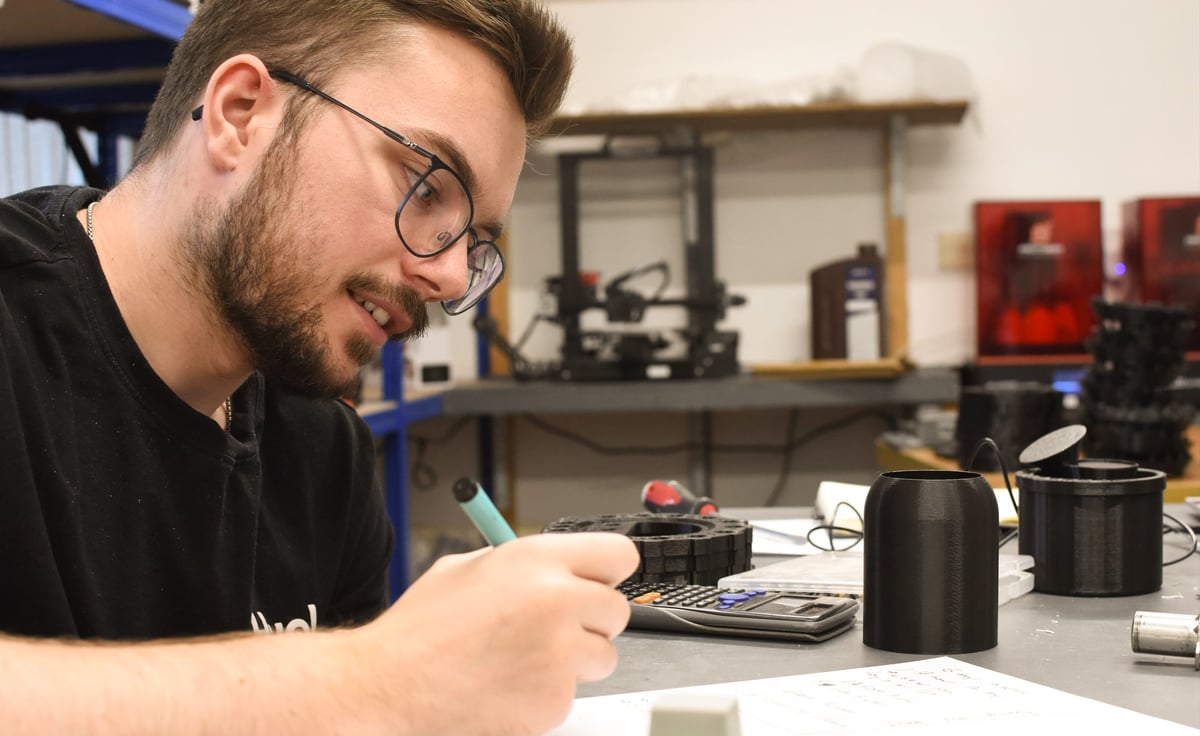
“I needed more than one printer,” Birkett recalls. “I needed three, then I needed five, and then it took over my whole living room.” Before he knew it, he was in business. Together with partners Tom Clark and Aidan Horton, they drafted a business plan and rented a production location. “It scaled pretty much organically from there.”
Founded in 2021, today, Birkett’s UK-based Protogen 3D, known as “P3D”, is a 3D design and 3D printing service with clients like BMW and Airbus. He left his full-time engineering job in 2023 to dedicate himself to his thriving start-up.
But it wasn’t all cake.
There was competition to overcome, technologies to select and master, processes to establish, and lots of lessons learned from missteps. There were many things he would have done differently had he known then what he knows now. All of which he shares with you in this exclusive one-on-one with All3DP.
Q. What do you wish you’d known before you started your 3D printing service?

“In the beginning, I didn’t charge enough. I think because the service I was offering was easy for me, I assumed it was of low value. I would give clients one- to two-hour long consultations, make CAD changes, and print loads of prototypes. Because I enjoyed the work so much, I would have done it for free anyway, I felt guilty about charging a decent amount of money for the services.
I devalued myself and that was a mistake. Ultimately, my customers suffered as well because my business didn’t grow as fast as it could have and I would have been able to offer more services. I would have been more experienced and better equipped for my customers if I just charged correctly from the beginning. That’s something that I learned along the way.
Another big lesson learned was not systemizing everything. The earlier you can adopt systems like spreadsheets, tools, and custom software, the faster your workflow becomes. With systems in place, the operation is less reliant on you as an individual to know everything. If you’ve got 25 orders, each with different print settings, parameters, and materials, maybe you can keep track of that in your own head, but handing anything over is a nightmare as soon as you start getting other people involved.
We’ve developed our own app for order management and we have our own quoting tool, which is very advanced but easy to use.”
Q. How did you grow your company so quickly?
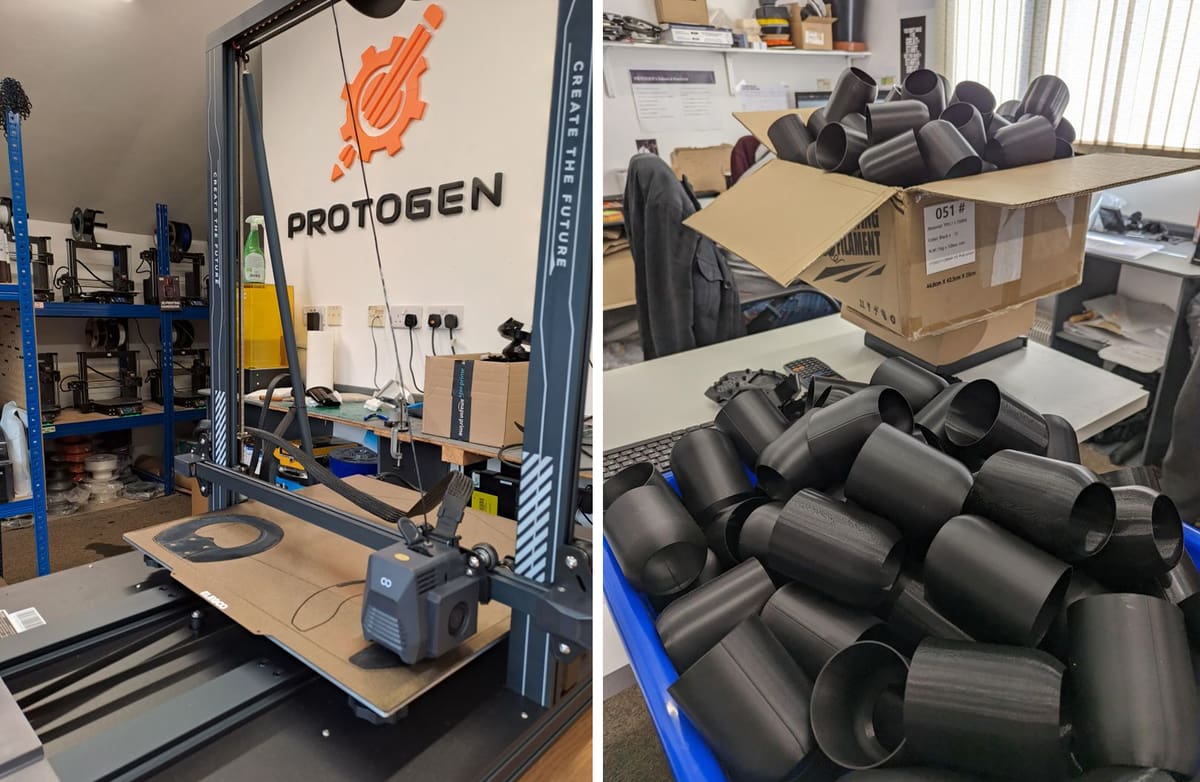
“Growth costs quite a lot of cash, especially if you want to grow very quickly. At first you think, I’ll reinvest all of my profits back into buying new machines and grow that way. But the larger orders require a larger upfront investment of time, money, and materials. Plus, larger clients usually take longer to pay. And so if you scale up at a fast rate, you’ll run out of cash constantly, which is fine because overall, the value of your business is growing, you’re getting more machines, and you’re getting bigger clients. But be aware that if you’re aiming for fast growth and you want a business that turns over a large amount or can support them full-time quickly, then it may not be profitable for a long time.
There were a lot of government schemes and startup loans that we turned to. Alternatively, you could try to find an angel investor or partner with an established business that will fund your growth as part of its 3D printing department. For example, a traditional injection molding company could believe that 3D printing is the future, but they don’t know anything about it. You could pitch to them the idea that if they fund your printing venture, you’ll run it as their prototyping wing, but with other clients on the side.”
Q. What printers do you use?
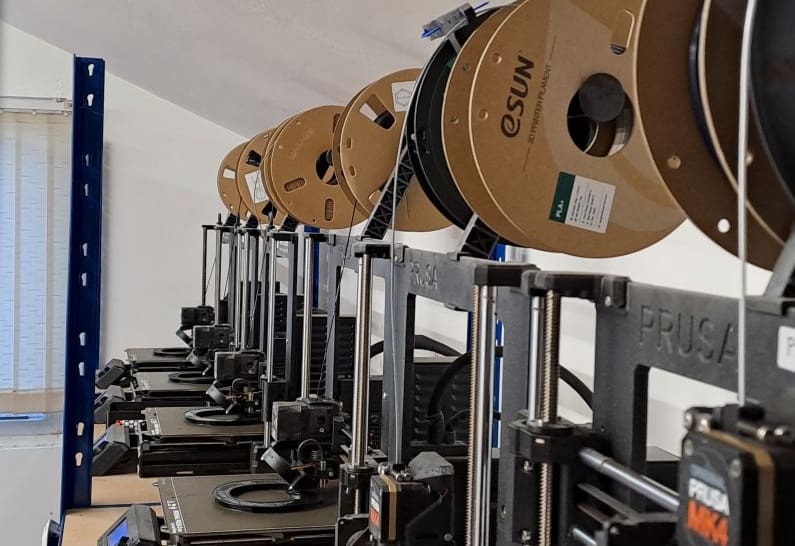
“It’s essential to simplify your machine range. I’ve seen a lot of hobbyist 3D printer groups online, and people show their setup with maybe eight different 3D printers – which I can understand because each has its own strengths, maybe one’s good with specialist materials, and one’s a large format and one prints really fast. But this can become very difficult because it means that if you have a job where you need to produce a high quantity of something, you have to figure out how to make each different machine produce the same end product.
Also, if you bring staff on board, each type of machine requires distinct training. Sometimes, the way you do one thing on one machine is the opposite of how you do it on another machine. So if you can simplify and find machines that you trust, that are reliable, and that you can scale with, then I would try to minimize the number of different machines that you buy. I think that would be helpful. That’s something we learned along the way.
Finding a machine that we could trust enough to scale with took a lot of trial and error. We were imagining a warehouse with 100 machines all the same, running the same jobs, and easy to use because we’re used to working with all of them, and it can all be systemized. In order to find that, we bought quite a few one-off printers here and there, tried them for a month or two and sold them. That’s the only way you can figure out what’s right for you, and that’s to try lots of different ones. I think that’s something to keep in mind: if you’re going to turn it into a larger business, it needs to be repeatable.
We have 15 or so Prusa’s, i3 MK3 and Mk4s. We also have around 14 Bambu Lab printers: X1 Series, A1, and A1 Minis; and five Elegoo resin 3D printers. Each has its pros and cons.
Ultimately, we aim to scale up our FDM mass manufacturing side with the Bambu Lab because they’re simple and reliable, and they print very fast. Also, the price point is low enough that we can scale up quite quickly with them. That’s the sort of move we’re making at the moment, but who knows, in two months time with the way the 3D printing industry works, a new machine may come out and knock everyone’s socks off.
At any one time about 95% of the machines are up and running. 3D prints do fail. It’s rare, but occasionally, it also damages the 3D printer. So, I’d say we usually have two or three printers needing repair since they are relatively high-maintenance machines compared to some more traditional manufacturing methods. But they are smaller and more complex. So this is to be expected.”
Q. What was one of the biggest surprises working with customers?
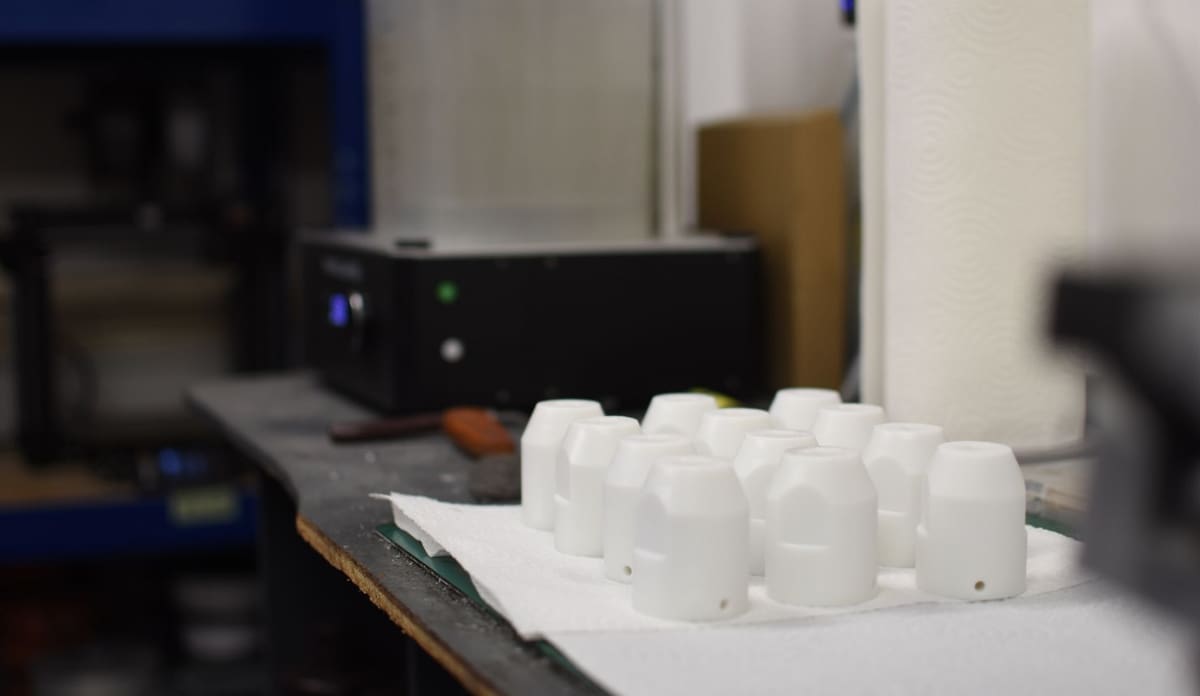
“One thing that I learned is that a defect to me could be a feature to a customer. A lot of 3D printing enthusiasts become obsessed with reducing layer lines and markings from the 3D printing process. They want it to look like an injection molded part. But ultimately, it’s not the same process, and injection molded parts have flashing, and they have injection points, and they have burrs, and seam lines. We’ve just come to accept that because it’s part of the process.
More often than not, when I hand over something that’s been 3D printed, and it looks 3D printed, customers say, ‘I love this texture,’ or ‘it’s it’s really unique,’ or ‘it feels great in my hand and it’s got a nice grip to it.’
There are a lot of features that are just part of what 3D printing is. People know that when they place an order, or if they don’t, then they’ll be hopefully pleasantly surprised by what they get.”
Q. Do you have any tips on cutting costs?
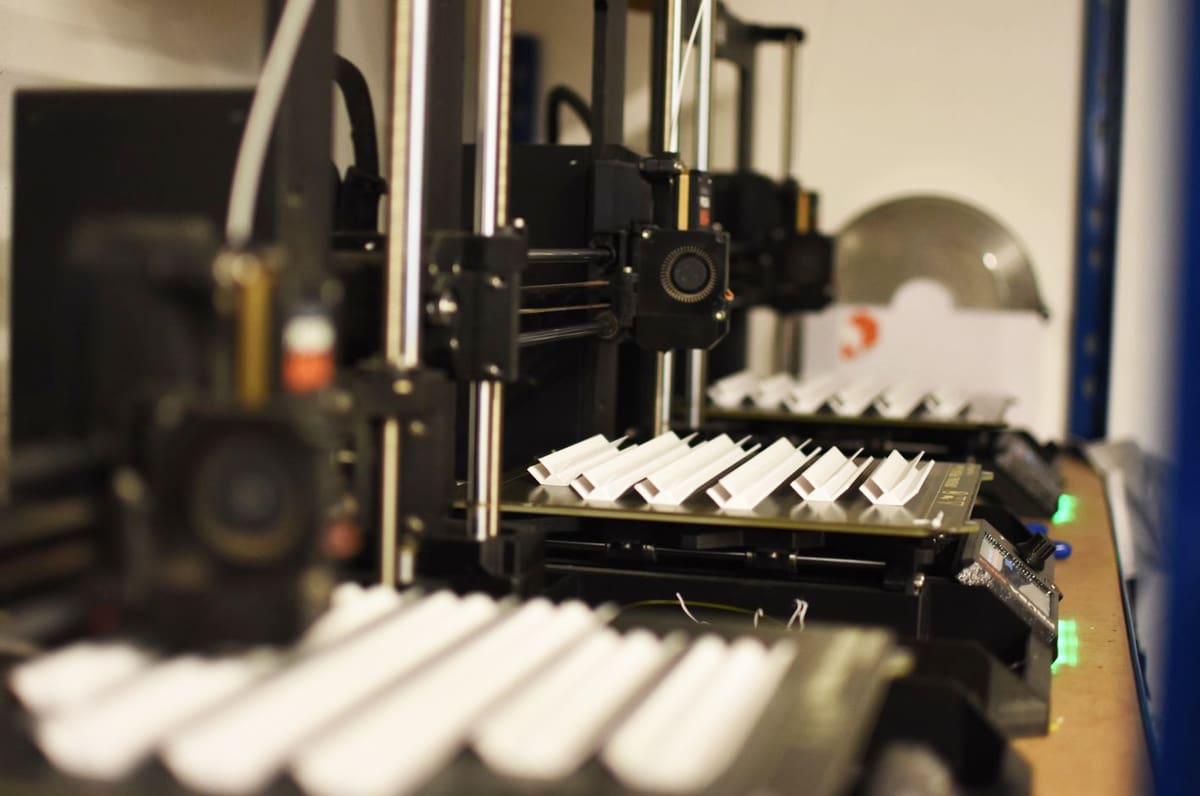
“If you can develop a good relationship with the filament manufacturer, then you can save a lot of money. You also have someone to go to with quality issues, concerns, or suggestions to the manufacturer and build a valuable relationship.
We’ve established a solid supply chain with a filament manufacturer who is able to offer us a mass production priced filament, at a low volume minimum order quantity. They understand we’re a small business and that cash flow is tough, so they import large quantities of filament and store it for us. Then we can buy in smaller batches and wholesale prices.
If you’re buying the bulk of your material through Amazon, there’s a long line of middlemen taking their cut to store, transport, list, or sell the filament.”
Q. How do you set yourself apart from other 3D printing services?
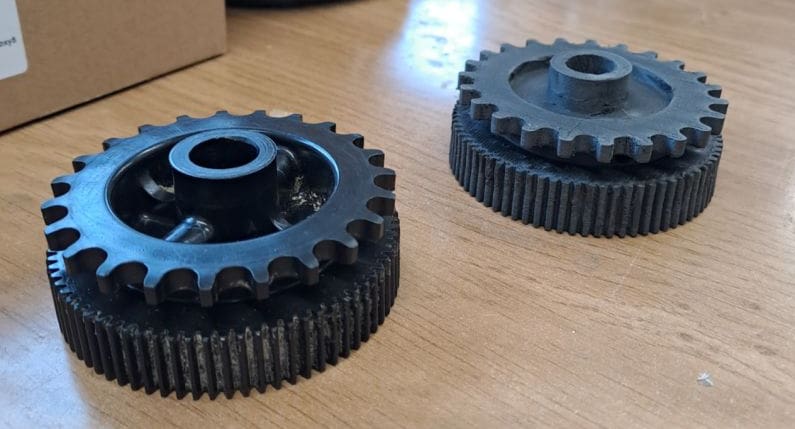
“Well, for every strength that your competition has, if you have the opposite, then that’s also a strength. For example, someone might say they’re the biggest 3D printing company in the UK, but then you could say; ‘Well, you don’t want to go to them because they’re just a huge corporation and you’re just a number on their spreadsheet, whereas you’ll speak to me directly, and you’ll get a personalized service.’ If they say, we offer the cheapest service; you say, we offer the most expensive service because it’s the best.
Essentially, you have to realize what you’re good at that sets you apart. For us personally, our unique selling point is that we are fast-paced, so we offer UK businesses a two-day lead time; sometimes, for local businesses, we’ve done less than one day, we’ve done six-hour lead times on jobs.
When a customer’s machinery goes down it might cost them £1,000 a day of lost revenue, so they call us up in a frantic state and we can solve the problem for them in a day instead of a company, perhaps in another country, solving the problem in 10 days; that’s worth a lot to the customer. So, for us, a fast turnaround and a friendly style of communication are strengths. So far, that’s built good relationships with repeat customers.”
Q. Are 3D printing networks, like Craftcloud, a benefit to local entrepreneurs in 3D printing?
“I think it’s only a good thing. We’re on CraftCloud and we like the platform, it’s also healthy that there are multiple service bureaus for 3D printing, which keeps us all competitive. This is only healthy for the economy because it discourages monopolies, which I think is great. It means that there’s work available for everyone, which keeps things fair and honest. If you’re starting out and you’re able to get set up on the CraftCloud platform that could be a good way to get your first few customers.
If people are threatened by competition, this business isn’t for them. If you aren’t comfortable putting your service alongside other people’s service and seeing it for what it is when it comes to lead time, price delivery terms, and quality, if you’re not willing to be compared to others, then perhaps you aren’t proud of your own work. CraftCloud inspires the best of manufacturers because it’s inherently competitive.”
Q. Design services: How important are they?
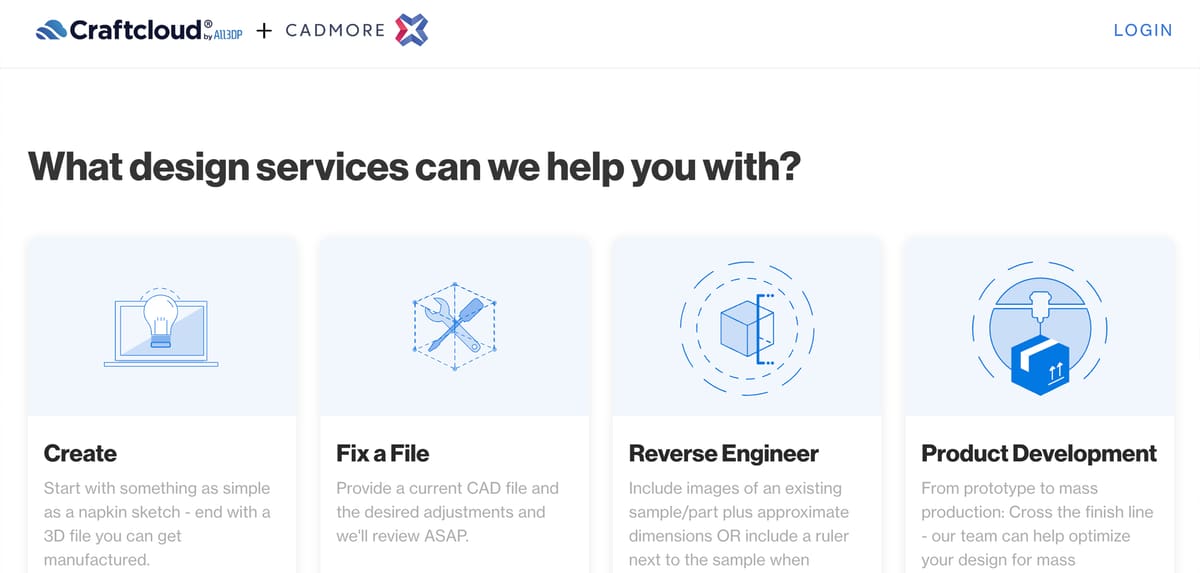
“I originally thought design services was a very important and unique selling point, but it didn’t end up that way.
With the amount of moving parts and work there is to juggle within the print farm, I would much rather pay for the service to be outsourced to someone I trust. So, having a good connection with a 3D design agency or freelance mechanical design engineers is worth it. I wish I’d done it sooner because now our projects are getting processed so much faster. And actually, the service we can offer to our customers is better.
In fact, because we don’t do our own designing anymore, we can offer our established customers more help with design for additive manufacturing. They’ll ask if there are any changes we could make to optimize their existing for 3D printing, and there always is. There are lots of things that you can do with regard to making a part lighter weight, smaller, have fewer parts, or print faster. We tend to give a quick summary of what we would change, but it’s not a service that we offer or rely on for income. It’s more something that we do for our customers.”
Q. What were some hurdles in growing your business?
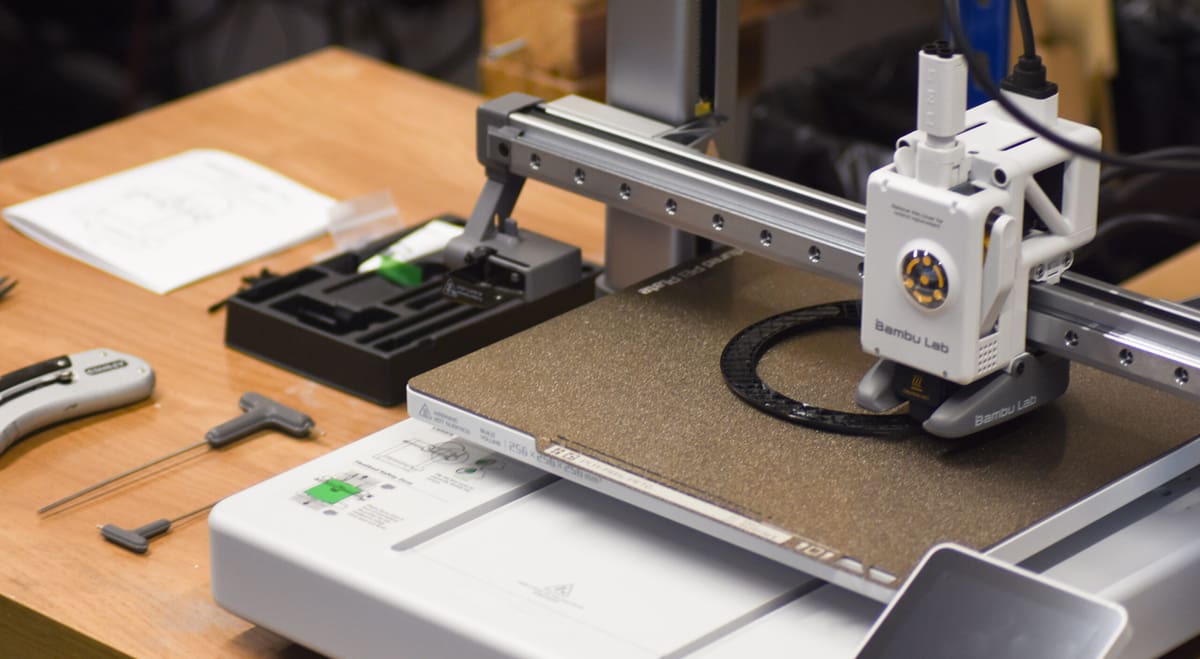
“3D printing is accessible. But with a low barrier to entry comes a high level of competition. Although 3D printing is easy to get into, it’s not easy to excel at. As a hobby with one machine, it could be a nice side earner. But if you want to scale it to a big business, you have to treat it like a big business, and it’s hard work.
For me, it was a good year and a half of constantly losing money on almost no salary. That’s not for everyone. A 3D print farm is a factory that has to make hundreds of different products every day so there’s problem-solving on every print bed, and if you have 100 machines, that’s 100 problems a day you have to solve. It’s not like injection molding, where you get the tooling made, you test one, and once it’s right, you run it 10,000 times. Instead, every machine could have different problems. And each print requires a level of unique thought and problem-solving. So it’s difficult work, but it’s out there, and if you want it, then you can get a machine and start in your living room just like me.”
Q. How do you promote your business?
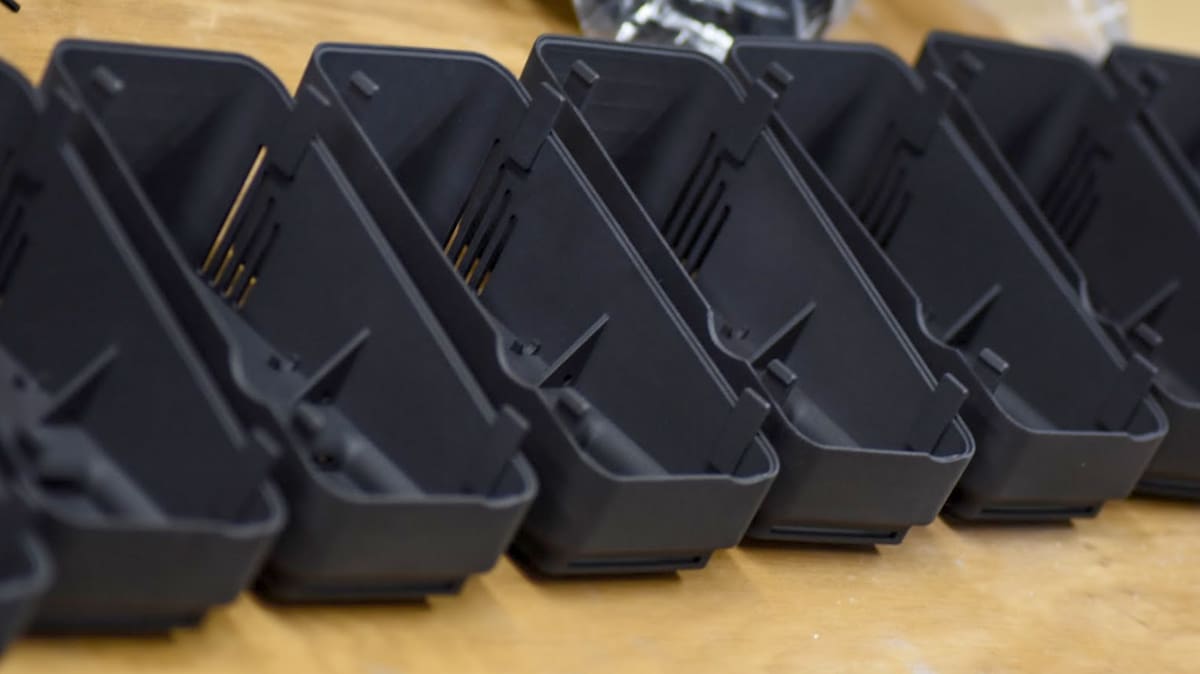
“At first, marketing was word of mouth and we became known as the 3D printing guys. There were lots of people we did simple jobs for then they showed those around. People would come and see us, as they’d heard about 3D printing, and they had this vague idea, and they just came over.
The best marketing is a good, quality product, because if you sell something good enough, it is an advertisement for what you do. We see products early on, and we know when one is going to be a winner. We’ve seen a few winners. It’s nice to be part of that story.
Next, become visible to people searching for 3D printing on Google and Google Maps by being a business on Google, because a lot of people look for 3D printing near me. And so if you’re the first name that comes up, or if you’re one of the names that comes up with lots of good reviews and examples of your work, you become a customer-magnet.”
Q. Where do you see your company in two years?
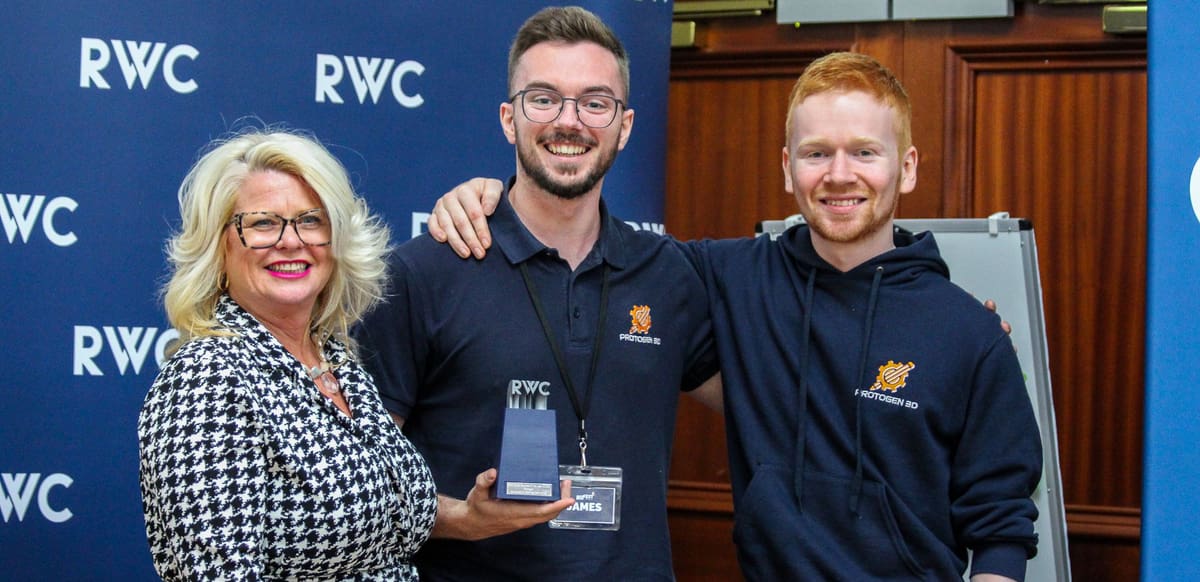
“In two years, we’ll have a new building that’s being built for us now, which will be approximately eight times the size. That building can fit well over 300 printers, I think we’ll be pushing on 400. At that point, we’ll have a team of six or seven running the machines. We’ll have a workshop and design office upstairs in that building as well.
What I would love to see in two years’ time is that someone can walk in through the door with a scrap of paper and some scribbles, then, then come back a week later with the first prototype of their product. And we can offer all of the manufacturing services and all the design services required to make someone’s idea a reality.
I think, as with anything, if you enjoy the work, then it’s not really work.”
License: The text of "James Birkett Built a 3D Printing Business From His Living Room. You Can, Too" by All3DP Pro is licensed under a Creative Commons Attribution 4.0 International License.


